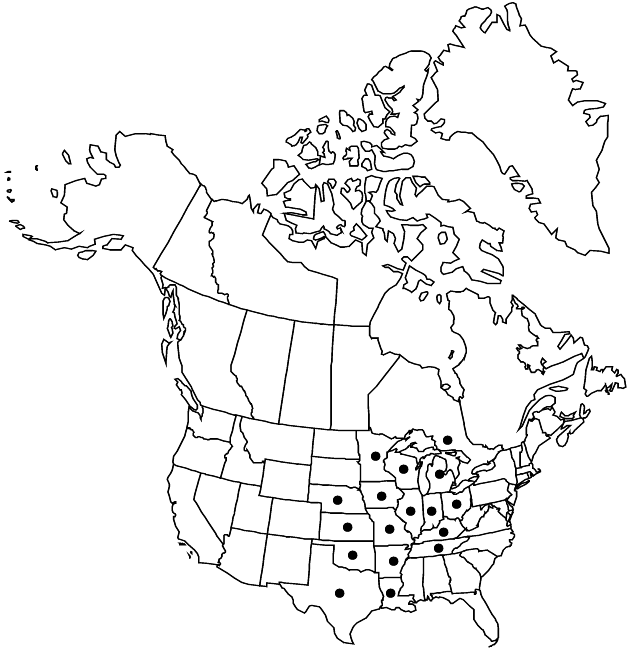Hieracium longipilum
Fl. Bor.-Amer. 1: 298. 1833.
Plants 30–75(–200) cm. Stems proximally piloso-hirsute (hairs 6–15+ mm), distally piloso-hirsute (hairs 3–10+ mm), sometimes stellate-pubescent as well. Leaves: basal 3–8+, cauline (3–)6–12+; blades oblanceolate, 45–80(–250+) × 12–30(–40+) mm, lengths 4–7+ times widths, bases cuneate, margins entire, apices rounded to acute, faces piloso-hirsute (hairs 3–8+ mm). Heads 10–20+ in paniculiform to nearly racemiform arrays. Peduncles stellate-pubescent and stipitate-glandular, sometimes piloso-hirsute as well. Calyculi: bractlets 9–13+. Involucres campanulate, 6–8(–10) mm. Phyllaries 12–21+, apices acuminate, abaxial faces stellate-pubescent and stipitate-glandular. Florets 30–40(–60); corollas yellow, ca. 7 mm. Cypselae urceolate, 3–4+ mm; pappi of 35–40+, stramineous to sordid bristles in 2+ series, 5.5–6.5 mm.
Phenology: Flowering Jul–Sep.
Habitat: Fields, prairies, roadsides
Elevation: 100–400 m
Distribution

Ont., Ark., Ill., Ind., Iowa, Kans., Ky., La., Mich., Minn., Mo., Nebr., Ohio, Okla., Tenn., Tex., Wis.
Discussion
Hieracium longipilum may be no longer present in Quebec.
Selected References
None.